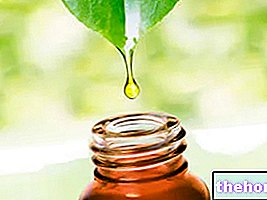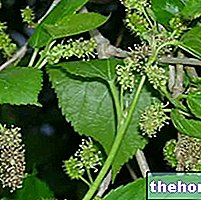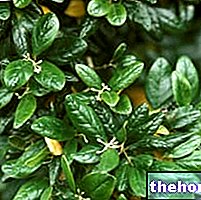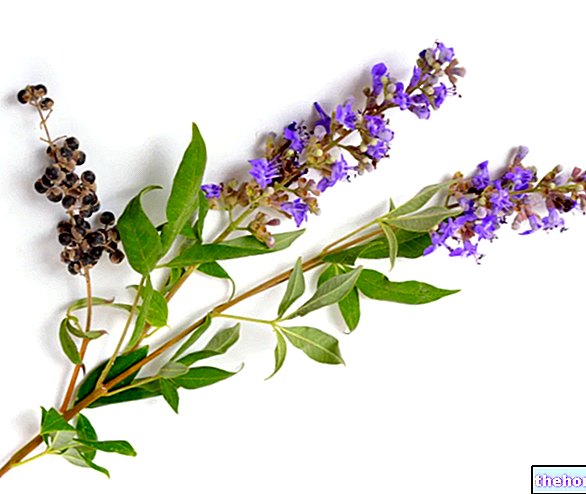Introduction
A champion of survival, the sea buckthorn, a shrub used in ancient times as an energy food for soldiers in times of war, and currently exploited in the most diverse fields (phytotherapeutic, food and cosmetic).

This strange fruit is also mentioned in ancient literature, described as a good ingredient to prepare tasty sweet sauces to accompany salmon.
It is said that until the end of the 80s of the twentieth century, the harvest of sea buckthorn fruits was very abundant, particularly in the Friulian and western Alpine mountainous areas (no more than 1,500 meters above sea level).
General description
The diffusion of the sea buckthorn ranges from the European Atlantic coasts to the north-east of China. In general, it is also distributed in Central Asia, preferring desert and hostile areas: this explains why the sea buckthorn is defined as a survival champion , dismantling the competition of other plants which are denied the possibility of growing and developing in similar lands. Nevertheless, the plant fears shady areas and / or near trees.
Botanical analysis
The sea buckthorn is the largest exponent of the genus Hippophae, belonging to the Eleagnaceae family: we are talking about a particularly branched thorny shrub, capable of reaching even 6 meters in height (in Asia there are some varieties that reach 10 meters). The leaves are deciduous, alternate, covered with a fine hair, and often wear a silver-colored dress, sometimes greenish-yellow. The flowers, rather small, appear disc-shaped and yellowish. The sea buckthorn plants are dioecious shrubs: the plant does not present at the same time female and male flowers, therefore, to obtain fruits, two different specimens are needed.
The fruits grow grouped along the branches: they appear as an elongated "olive, rather acidulous although edible, and used in particular to prepare syrups.
Fruit harvesting is sometimes problematic, due to the thorns protruding from the branches: in this regard, the sea buckthorn has long been considered an "ideal" defense "plant for hedges.
Chemical and nutritional components
In herbal medicine, sea buckthorn fruits, seeds and leaves are used for the extraction of active ingredients and chemical components. The oil extracted from the fruits constitutes a variable percentage from 5 to 9% (of which 53% is represented by acids unsaturated fats), according to the variety and quality of the sea-buckthorn. Among the organic acids are mentioned citric, malic, tartaric, oxalic and succinic. Sea buckthorn fruits are a source of vitamin C (695 mg per 100 grams of product, a much more abundant quantity than that of citrus fruits), carotenoids and tocopherol. Among the other chemical molecules, flavonoids (140 mg per 100 g), terpenes, sterols and pectins cannot be missing in fruits.
The leaves, on the other hand, are rich in triterpene molecules, catechin and gallic tannins. The essential oil extracted from the seeds is a source of unsaturated fatty acids, in particular linoleic (linolenic and oleic are found in halved quantities compared to linoleic). [chemical composition extracted from Dictionary of Phytotherapy and Medicinal Plants, by Enrica Capanini]
Property
In ancient times, the fruits of the sea buckthorn were used in folk medicine for laxative purposes, while the leaves and flowers seemed to act positively in the treatment of skin diseases, respiratory difficulties, rheumatism and gout.
Nowadays, sea buckthorn is widely used for its richness in vitamin C, which characterizes its phytotherapeutic use: it is estimated that a glass of juice obtained from these fruits can contain up to 33 mg of ascorbic acid, equal to quantity calculated in a fresh orange juice.
Not surprisingly, sea buckthorn fruits are widely used for their remineralizing and tonic properties; for the same reason, the plant is also used in the treatment of immune deficiencies, in the prevention of infectious diseases, in states of inappetence and asthenia.
Vitamin C promotes wound healing: not surprisingly, sea buckthorn juice is also recommended in the postoperative period.
The antioxidant virtues of vitamin C are enhanced by the synergistic action of beta carotene and vitamin E.
For external use, sea buckthorn fruits are used for their marked astringent and anti-inflammatory properties, in the treatment of inflammation of the gums and of the oral mucosa in general.
The importance of sea buckthorn does not stop only at the conspicuous quantity of vitamin C: the plant, in fact, also boasts healing, anti-inflammatory, capillarotropic and antperioxidative properties, while the mother tincture of young leaves and branches is used in the treatment of mild forms of enteritis.
In the light of recent studies, further and interesting properties have emerged attributable to the sea buckthorn: the peel that covers the fruits is made up of a lipid fraction involved in the healing action of the gastric mucosa. This property was widely demonstrated on animal models: sea buckthorn peels are potentially capable of decreasing the proteolytic action of acid proteases located near the gastric mucosa. The healing activity is fortified by the co-presence of flavonoids, molecules to which the anti-inflammatory and capillarotropic activity is also due.
Furthermore, the flavonoids contained in sea buckthorn leaves and fruits boast an antioxidative activity, capable of ensuring the protection of the membranes from damage induced by lipid oxidation. [From Dictionary of Phytotherapy and Medicinal Plants, by Enrica Campanini]
Toxicology
Fortunately, the sea buckthorn is not classified as a potentially toxic plant, except - clearly - for particularly sensitive individuals.
In case of kidney stones, the consumption of fruits or derivatives based on sea buckthorn is not recommended: vitamin C, in fact, can favor the excretion of oxalates (see diet and kidney stones).
Sea buckthorn in brief »
Select plant Fir Acacia Acerola Sorrel Yarrow Yarrow Yarrow Aconito Adatoda Garlic Agnocasto Agrimonia Alchemilla Alkekengi Aloe Altea Witch Hazel Ammi or Visnaga Pineapple Andrographis Anemone Pulsatilla Angelica Anise Star Anise Japanese Star Anise Bitter Orange Bitter Areca Arnica Harpagophytum Arpagophyte Artemisia Asteragus Basil Asparagus Asparagus Peruvian Asparagus Asparagus Asparagus Hawthorn Boldo Borage Shepherd's Purse Boswellia Bucco Butea superba Cocoa Coffee Cajeput Calamus Calamus Marigold Camedrio Chamomile Roman Chamomile Camphor Cinnamon Ceylon Maidenhair Capuchin Artichoke Cardamom Cardiac Thistle Asian Thistle Carvi Cascara Cassia Catecu Catha Cabbage Celandine Chicory Centaurea Cinnamon Cypress Celandine Chives Cypress Coca Cola Colchico Combreto Condurango Comfrey Coriander Cranberry Barberry American Chrysanthemum Cumin Turmeric Damiana Digital Dioscorea Drosera Dulcamara Dunalilella Echinacea Eder a Ephedra Elenio Eleutherococcus Helichrysum Evening primrose Horsetail Alfalfa Erica Euphrasia Erisimo Escolzia Eucalyptus Farfara Farfaraccio Calabar bean Fenugreek Fennel Phytolacca Frangola Ash Fumaria Japanese Mushrooms Galega Ganoderma lucidum Garcinia Cambogia Mulberry Gentian Broom Ginkgo Ginkgo Guipana Guipana Gynestra Ginkgo Hibelia Gymnasium Hibiscus Guarulp St. John's Wort Horse Chestnut Ispaghul Hyssop Jaborandi Kava kava Konjac Laminaria Cherry Laurel Lavender Lemongrass Lespedeza Lovage Icelandic Lichen Lemon Flax Lippia Licorice Lobelia Hops Maca Marjoram Maize Mallow Manna Marrubio Marrubio d "water Matè Melaleuca Meliloto American Lemon balm Myrtle Myrama Walnut Nutmeg Walnut vomica Olive tree Meadowsweet Ononide Opuntia Oregano Orthosiphon Nettle Poppy Papaya Parietaria Feverfew Passiflora Chilli Perilla Periwinkle Phyllanthus Plantain Picrorhiza Pilosella Pino Pisci dia Podofillo Polygala Grapefruit Parsley Psyllium Pueraria mirifica Butcher's broom Pygeum Quassia Oak Rhubarb Ratania Rauwolfia currant Castor bean Rhodiola Rosehip Rosemary Rue Willow Sarsaparilla Sage Elderberry Sassafras Sedum Ergot Senna Serenoa Repens Soybean Solidago Tansy Taraxus Tamarind Tamarind Tamarind Tamarind Tamarindo Ursina Valerian Vanilla Mullein Verbena Veronica Viburnum Vinca Pansy Mistletoe Vine Withania Yohimbe Saffron Ginger Pumpkin Select disease Juvenile Acne Rosacea Tinnitus Tinnitus Aerophagia Tendon Affections Afonia Aphthae Algias Functional Halitosis Breastfeeding Allergy Anemia Anguish Anxiety Arteriosclerosis Asthrosis Asthrosis Arthritis Arthritis Men Sex Woman Blepharitis and Conjunctivitis Eye bags Bronchitis Gallstones Kidney stones Salivary stones Baldness Androgenetic Candida Fragile hair Caries Headache Cellulitis Motion sickness Cystitis C limaterio Cholecystopathy High cholesterol Ulcerative colitis Colonoscopy Contusions Hematoma Convalescence Couperose Depression Dermatitis Diaper dermatitis Diabetes Diarrhea Erectile dysfunction Dyslipidemia Dysmenorrhea Dyspepsia Disturbances of vision Hemorrhoids Epistaxis Herethism Heart disease Fever Fibromyalgia Gastro-intestinal disease Flatulence Hypertension Fibromyalgia Gastrointomnia Jaundice Laryngitis Renal lithiasis Toothache Sore throat Thinness Menopause Meteorism Mononucleosis Alzheimer's disease Crohn's disease Nausea Vomiting Obesity Dark circles Onychomycosis Osteoporosis Dry skin Periarthritis Piorea Low pressure Prostatitis Psoriasis Colds Breast fissures Anal fissures Gastro-nasal rhinitis Senescence Premenstrual Syndrome Sinusitis Quit smoking Overweight Fatty liver Constipation Stomatitis Stress Cough Triglycerides high Ulcer Burns Nails Brittle flashes Heat Warts Dizziness Properties herbal Tanning Abortive adaptogenic Aphrodisiac bittering analgesic anesthetic anorectics analgesic antacid anti-allergic anti-asthmatic Antibiotic catarrh Anticellulitiche anticonvulsant Antidiaforetiche antidiarrheal edematous anthelmintic antiemetic Antiemorroidarie antiphlogistic Antiidrotiche Antinevrotiche Antioxidants antipyretic antirheumatic antiscorbutic Antiseptic antispasmodic anti-uric Aperitive Flavoring Astringent Balsamic Bechiche Capillarotrope Cardiotonic Carminative Cathartic Caustics Healing Cholagogues Choleretic Dyes Decongestants Deodorants Purifying Diaphoretic Cleansers Disinfectants Detoxifiers Thirst quenching Diuretics Exciting Emetics Emmenagogues Emollients Hemostatic Energies Hepatoprotectors Expectorants Eupepticus Moisturisers Galactosensitizers lanti Hypertensive Hypnotic Hypoglycemic Hypotensive Irritants Laxatives Soothing Narcotic Nerves Nutrients Odontalgic Pectoral Purgative Revulsive Remineralizing Refreshing Rubefacient Scialagoghe Sedative Soporifugas Sneezing Stomachic Stomatics Narcotic Vascular Tightenitis




























